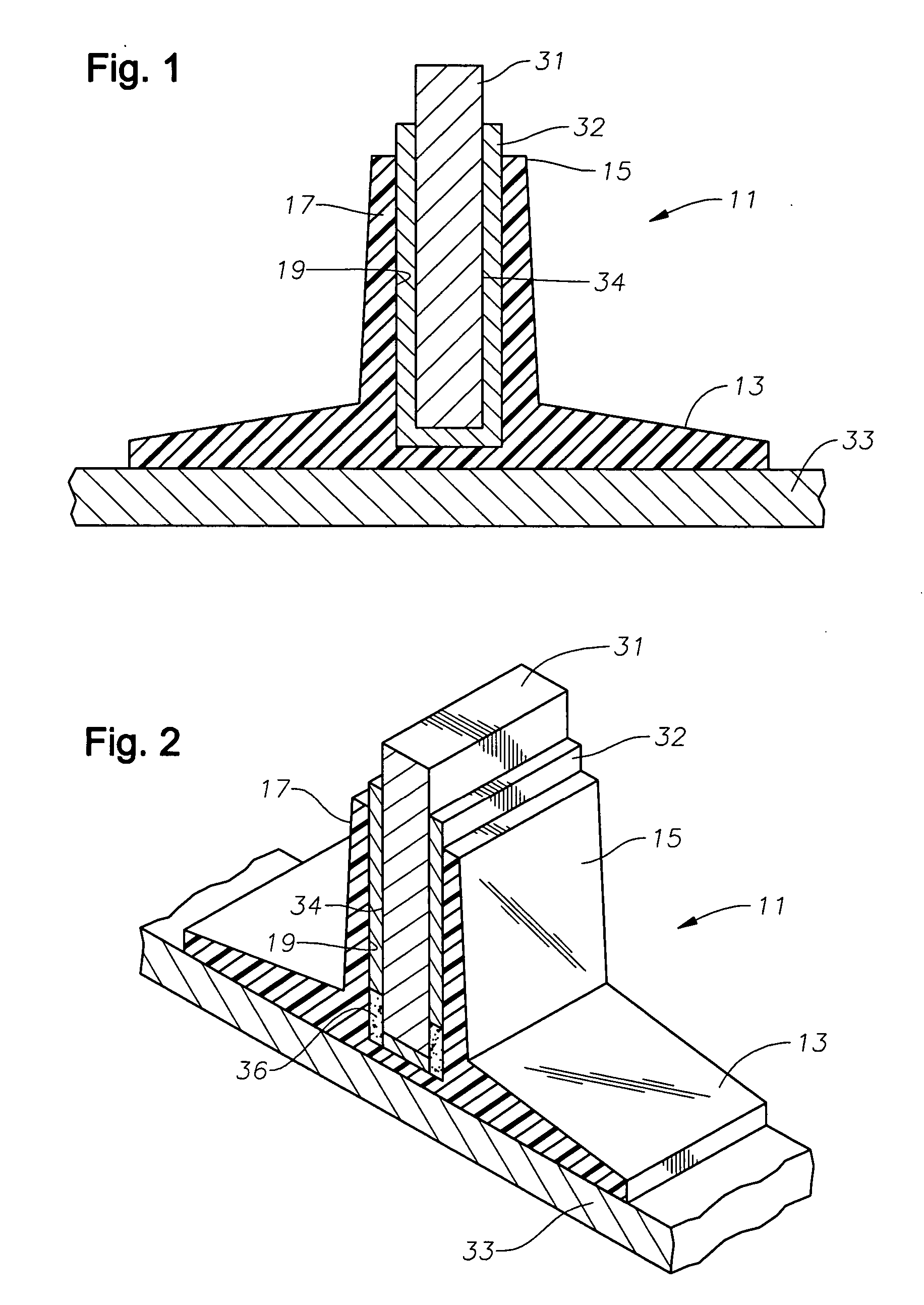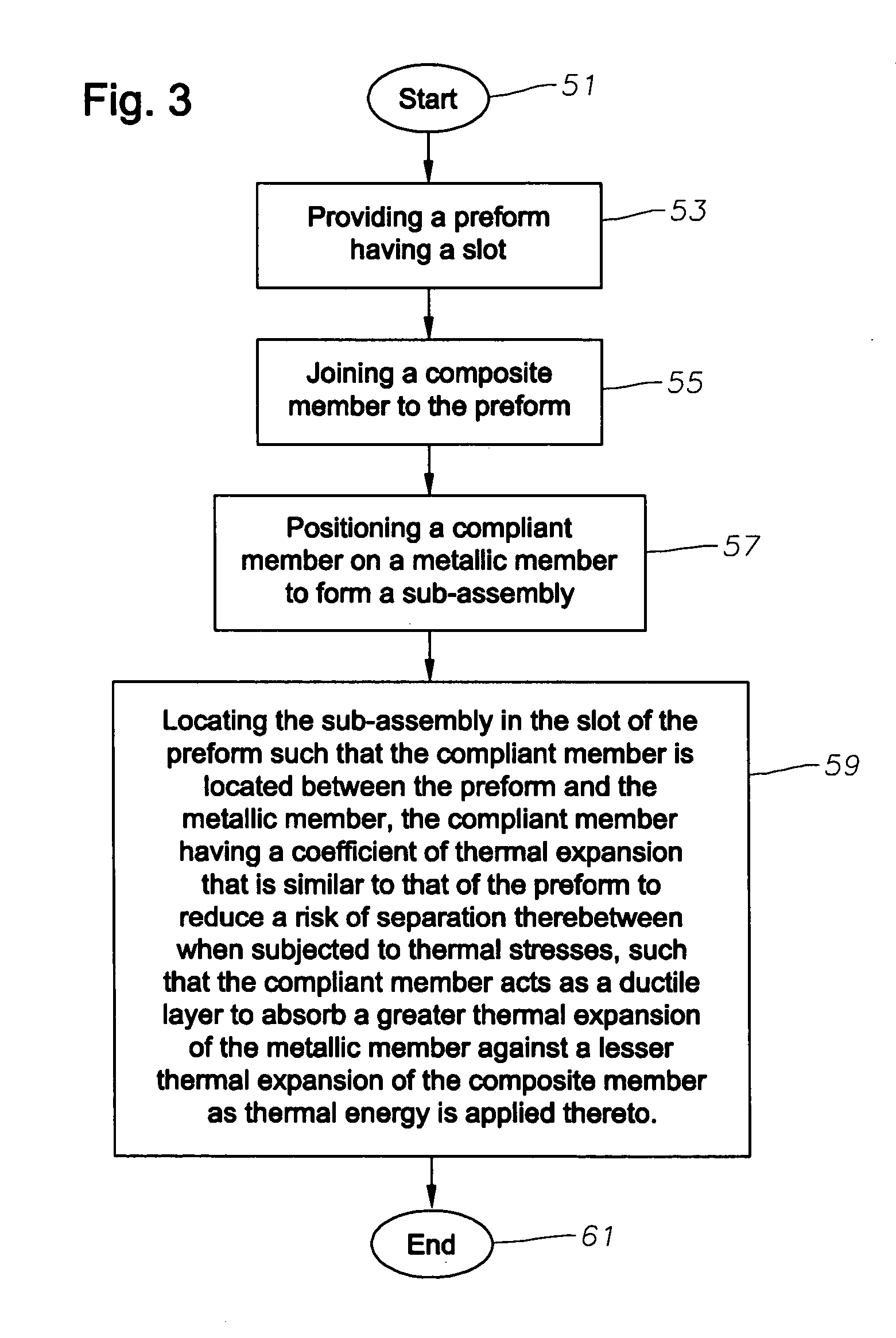System, method, and apparatus for metallic-composite joint with compliant, non-corrosive interface
a technology of compliant and non-corrosive interfaces and systems, applied in the direction of soldering apparatus, manufacturing tools,auxillary welding devices, etc., can solve the problems of difficult and tedious process of joining dissimilar materials such as metallic and composite components, and the failure of pi-shaped joints to form metallic-to-composite joints, etc., to prevent galvanic corrosion and reduce the risk of separation
- Summary
- Abstract
- Description
- Claims
- Application Information
AI Technical Summary
Benefits of technology
Problems solved by technology
Method used
Image
Examples
Embodiment Construction
[0013] Referring to FIGS. 1 and 2, one embodiment of a system, method, and apparatus for forming a compliant, non-corrosive interface or joint between metallic and composite materials is shown. A preformed component or “preform”11 for a structural support beam is shown. When viewed from the end or in cross-section, preform 11 resembles the Greek letter “pi” having a longitudinal crossbar or base 13 with two longitudinal legs 15, 17 extending therefrom. A channel or slot 19 is defined between the base 13 and legs 15, 17.
[0014] In one embodiment, preform 11 is a composite material that is formed by weaving or braiding continuous bundles or tows of structural fibers. The tows of fibers may be oriented to extend continuously throughout each segment of preform 11 including base 13 and legs 15, 17. The fiber preforms may be formed to provide any desired fiber architecture needed to impart chosen load-carrying capability and to accommodate any desired web plate thickness. Preform 11 may b...
PUM
| Property | Measurement | Unit |
|---|---|---|
| metallic | aaaaa | aaaaa |
| coefficient of thermal expansion | aaaaa | aaaaa |
| thermal stresses | aaaaa | aaaaa |
Abstract
Description
Claims
Application Information
 Login to View More
Login to View More - R&D
- Intellectual Property
- Life Sciences
- Materials
- Tech Scout
- Unparalleled Data Quality
- Higher Quality Content
- 60% Fewer Hallucinations
Browse by: Latest US Patents, China's latest patents, Technical Efficacy Thesaurus, Application Domain, Technology Topic, Popular Technical Reports.
© 2025 PatSnap. All rights reserved.Legal|Privacy policy|Modern Slavery Act Transparency Statement|Sitemap|About US| Contact US: help@patsnap.com


